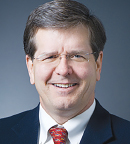On July 7, the U.S. Preventive Services Task Force (USPSTF) posted a draft recommendation statement, draft evidence review, and draft modeling study on screening for lung cancer in people who do not have signs or symptoms. Based on the evidence, the USPSTF recommends annual screening using a low-dose computed tomography (CT) scan for people aged 50 to 80 who are at high risk for lung cancer because of their smoking history. This is a B recommendation, defined by the USPSTF as a recommendation based on high certainty the net benefit is moderate or there is moderate certainty the net benefit is moderate to substantial.
People between 50 and 80 years old who are current or former smokers should talk to their doctor about whether they are at high risk for lung cancer. If they are, they should discuss the benefits and harms of screening so they can determine whether screening for lung cancer is right for them.
Background and Implications
Smoking is the leading cause of lung cancer. Those at high risk are people who have smoked at least 20 pack-years over their lifetime and still smoke or have quit smoking within the last 15 years. A pack-year is defined as the equivalent of smoking an average of 20 cigarettes—or one pack—per day for a year.
In this new draft recommendation, the Task Force has made two changes that will nearly double the number of people eligible for lung cancer screening: first, the Task Force now recommends that people start screening at age 50, rather than 55; second, this recommendation reduces the pack-years of smoking history that make someone eligible for screening from 30 pack-years to 20.

Michael J. Barry, MD
“New evidence provides proof that there are real benefits to starting to screen at a younger age and among people with a lighter smoking history,” said USPSTF member Michael J. Barry, MD, Director of the Informed Medical Decisions Program in the Health Decision Sciences Center at Massachusetts General Hospital and Professor of Medicine at Harvard Medical School. “We can not only save more lives, we can also help people stay healthy longer.”
By expanding who is eligible for screening, the changes to this recommendation will be especially helpful to black and female patients. Data show that black and female patients tend to smoke fewer cigarettes than non-Hispanic white men; but the black population has a higher risk of lung cancer than the non-Hispanic white population. These changes will mean that many more black and female smokers will be eligible for this potentially life-saving screening.
Additional Comments
“Some really good news from the changes to this recommendation is that it will mean more people are eligible for screening…,” said USPSTF member John B. Wong, MD, Chief Scientific Officer, Vice Chair for Clinical Affairs, Chief of the Division of Clinical Decision Making, and a primary care clinician in the Department of Medicine at Tufts Medical Center. He is also Director of Comparative Effectiveness Research for the Tufts Clinical Translational Science Institute and Professor of Medicine at Tufts University School of Medicine and the Tufts University School of Graduate Biomedical Sciences. “Making screening for lung cancer available to people who have smoked less over time will help doctors support the health—and potentially save the lives—of more of their [black] and female patients.”

James L. Mulshine, MD
In an interview with The ASCO Post, James L. Mulshine, MD, of the Center for Healthy Aging, Department of Internal Medicine, at Rush University in Chicago, noted that the USPSTF draft recommendation for lung cancer screening affirms the value of CT screening for lung cancer and that the recommendation to start screening at age 50, rather than 55, is positive. He also favors the recommendation for eligibility to include persons with a 20 pack-year history of smoking (vs 30 pack-year).
Dr. Mulshine cautioned, however, that “there remain two areas of contention that are not well addressed: Whereas provisions extend coverage for all including African Americans, the new draft recommendations do not fully consider the risk disparity reported for African Americans. Further, the cessation of screening coverage 15 years after smoking cessation is not supported by the well-established epidemiologic data and creates a disincentive for smoking cessation.”
Dr. Mulshine noted that “the initial USPSTF recommendations were weighted toward concerns that the benefits of lung cancer screening were modest and that the potential for significant harms were worrisome. The published experience over the past 5 years, however, has included numerous reports of a reduction in screening harms from surgical complication rates to more efficient screening workup approaches. In addition to the confirmatory randomized trial results with the NELSON report, there have been other publications of enhanced mortality benefit based on long-term follow-up.”
The USPSTF’s draft recommendation statement and draft evidence review have been posted for public comment. Comments can be submitted from July 7 to August 3.

